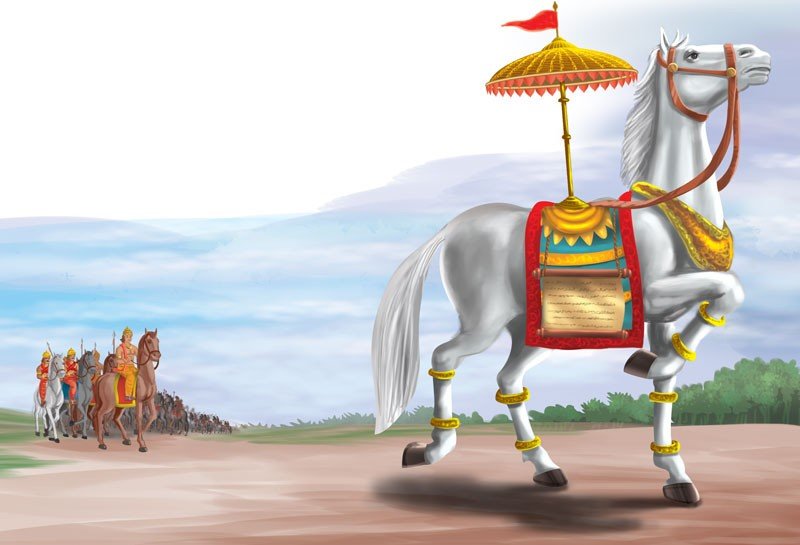Only a sovereign emperor was entitled to performing the Ashwamedha Yajna which established the superiority of the emperor over the other kingdoms by fair means or foul. In consultation with his preceptor and near and dear ones Rama decided to perform the Ashwamedha Yajna. Invitations were sent to learned men, sages, saints and seers, kings and princes across the land. No holy sacrifice could be performed without the presence of wife.
That was why the exalted sages and saints asked Rama to get married again.
Rama never thought of any woman except for Seeta. So, he asked the sages to find a solution to the problem as his wife was in the forest. He also added that he would never marry again as no other woman could take the place of Seeta in his life. Thus a golden statue of Seeta was placed beside Rama while he performed the yajna.

A thoroughly bred white horse was prepared and decorated with costly jewels before being let loose to travel across the land. Wherever it roamed, the sovereignty of the emperor had to be accepted. If it was held by anyone, that person had to battle with Rama’s army or submit to his overlordship.

